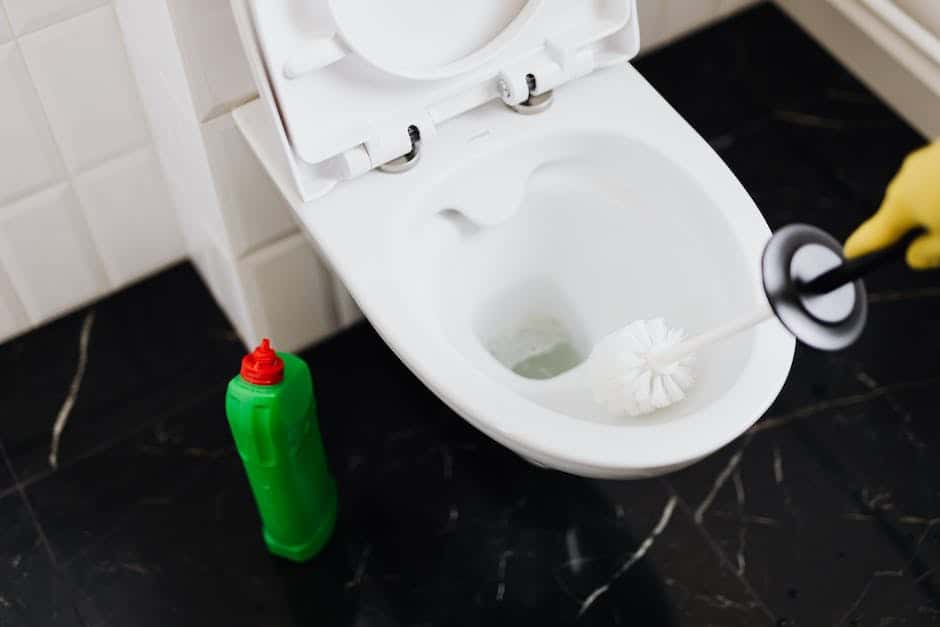If your toilet flange is too high, it can cause your toilet to leak. There are a few ways to fix this problem. One way is to use a toilet flange extender. Another way is to use a toilet flange repair ring.
The answer to this question depends on a few different factors. First, you’ll need to determine how high the toilet flange is off the ground. Second, you’ll need to determine how much clearance you have between the toilet flange and the bottom of the toilet. Third, you’ll need to determine how much height you need to add to the toilet flange in order to make it level with the ground.
Table of Contents
How do you fix a toilet flange that is too high?
It’s important to make sure that your toilet is level and stable. Otherwise, it can wobble and become a nuisance. In this case, it sounds like the flange may not be level, so you’ll need to adjust it or replace it.
If you install the toilet flange on top of the finished floor, you can avoid leak paths forming. This is because the flange will be at the correct height to accept the horn at the bottom of the toilet, and there will be no gap for leaks to occur.
How much higher should a toilet flange be than the floor
The flange is the part of the toilet that attaches to the floor and provides a seal. The height of the flange is important in creating a good seal. The optimum height is 1/4 inch above the finished floor. This allows for a good seal with almost any type of wax ring.
The toilet flange needs to be on top of the finished floor. Meaning, the bottom edge of the flange needs to be on the same plane as the toilet. So, if your toilet sits on the tile, the flange needs to be on top of the tile too. The spacing of the toilet exit “horn” and sealing surface is designed for this height.
What does it feel like if flange is too big?
If your breast pump flange is too big you may experience: All or a most of your areola being pulled into the flange and tunnel, causing pain The flange loses contact with the breast within the first few minutes Your breasts aren’t fully drained, leading to decreased output. All of these can be remedied by finding a correctly sized flange.
This toilet flange is designed to glue on the inside of the pipe. Leave the old toilet flange right in place and glue on the new one at the right elevation for the floor, if it’s plastic. The flange should be sitting with the bottom edge flush with the top of the floor.
Should toilet flange be screwed to concrete floor?
When you are installing a toilet, it is important to make sure that the flange is fastened securely to the floor. You can do a dry fit of the toilet to see if it rocks before you actually install it. If it does rock, you can use shims to stop the rocking. Just tightening the bolts probably will not stop the rocking, but it could risk cracking the toilet or breaking the flange.
To ensure you have the correct size flange, it should fit comfortably around your breast with only your nipple and a small part (or none) of your areola entering the tunnel when pumping. Your nipple should move freely when pumping without rubbing against the side of the tunnel.
Can wrong flange size cause pain
It is so important to make sure that your pump flange is the right fit! Not only can the wrong sized flange cause nipple damage and great pain, but it can also negatively impact the amount of milk you are able to get out of your breast. If you are experiencing any pain or discomfort while pumping, be sure to check your flange size to ensure that it is the right fit for you.
If the flange that came with your pump doesn’t fit properly, it could cause friction and soreness. Make sure to order the right size flange to avoid this.
How far should the toilet flange be from the finished wall?
When you are installing a new toilet, you will want to set the center of the water closet flange 12 inches from the finished back wall. This ensures that the toilet will be properly seated and will not leak. Be sure to measure from the finished wall, not from the base molding.
Assuming you are attaching a new toilet flange to the subfloor:
If no hardware was provided, use wood screws or cement screws, depending on your subfloor material.
Slide the toilet flange bolts into the new flange. Secure them with washers and nuts.
There’s no need to use an adhesive when installing a gasket-sealed PVC flange.
What happens if the toilet flange is lower than the floor
If you’re having trouble with a too-short flange, there’s an easy solution. Look for a toilet flange spacer or extender. They come in different sizes and some even have rubber or silicone gaskets attached. Just insert the spacer into your existing flange.
If your old toilet flange is made of PVC and is glued to the concrete, you’ll need to use a saw or chisel to remove it. If the flange is held on with screws, simply remove the screws and lift the flange off.
Scrape off all of the old wax from the flange and the concrete. Be sure to remove any screws or other obstructions that might be in the way of the new flange.
Now you’ll need to select the correct new toilet flange. There are many different types, so be sure to get one that is compatible with your toilet and your concrete slab.
Most new toilet flanges will come with T-bolts. These bolts will be used to attach the flange to the concrete.
Position the new toilet flange over the hole in the concrete. Once you’re happy with the positioning, use a drill to make holes for the T-bolts.
Screw the toilet flange onto the concrete using the T-bolts. Be sure to use washers and nuts to secure the flange in place.
How do you seal a toilet flange to the floor?
The flange is the part of the drain that sticks out from the wall. The rubber lip is inside the drain and seals the drain to the bowl. The holes in the bowl are for the screws that hold the bowl to the wall.
I used a hammer drill and a 3/16 masonry bit to drill the holes to receive the concrete screws. It worked great and the screws went in easily.
Is it better to use flanges that are too big or too small
It’s important to get the right flange size for you so that you have the best possible comfort, seal and milk flow. If your pump flange size is too big, you can pull your areola unnecessarily into the pump funnel and damage the skin and tissue. Getting the right flange size will help you to avoid these potential problems.
If you are having trouble with your flange, it is important to find the right balance. If your flange is too tight, it can constrict your breasts and cause clogged milk ducts. If your flange is too loose, you may not remove all the milk from your breast, which can lower your milk production.
Conclusion
If your toilet flange is too high, you will need to either get a new flange that is the correct height or shim the existing flange to make it level.
If your toilet flange is too high, it could be causing your toilet to leak. To fix this, you will need to replace the flange.
